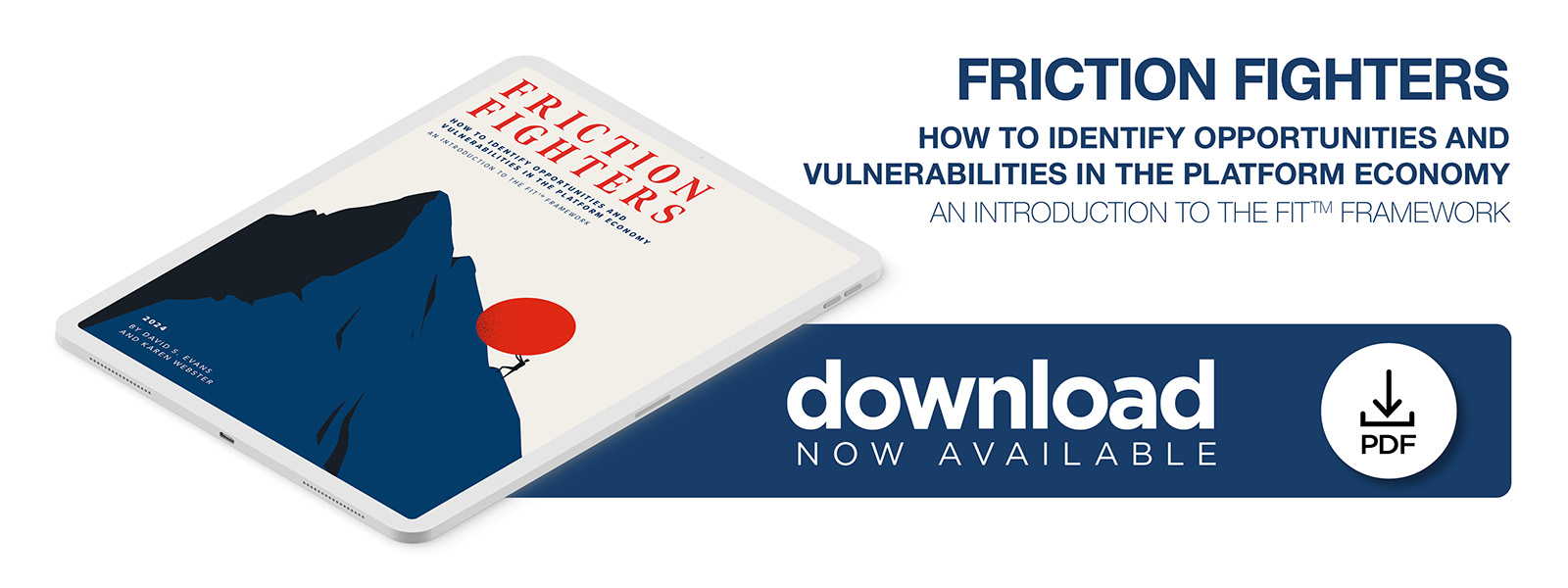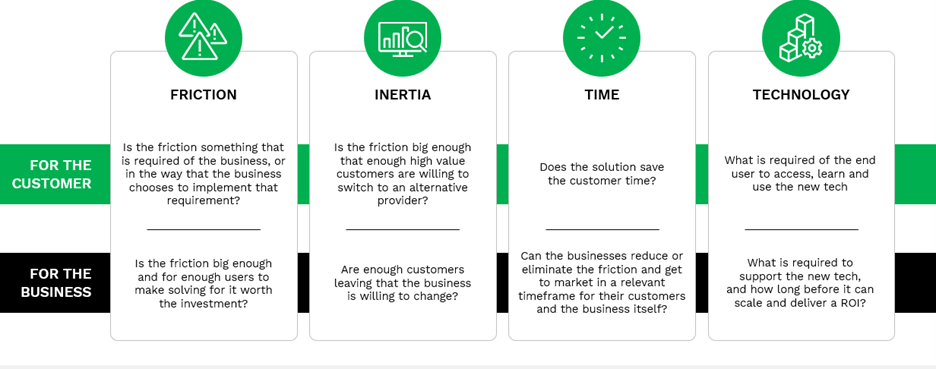Friction Fighters: How to Monetize Friction and Ignite Platforms in the Digital Economy

 Decisions, Decisions
Decisions, Decisions
It is said that the average person makes 35,000 decisions a day. Some, like whether to have oatmeal or eggs for breakfast, don’t carry a big downside risk since both are healthy food choices.
Others may.
Nearly three-quarters of executives surveyed recently said the number of business decisions they make daily has increased 10X over the last three years; 59% said they don’t feel confident making at least one of them.
More data isn’t always the answer, which many executives say can overwhelm and confuse rather than clear the path.
In a digital world dominated by network effects and platform solutions, frameworks are now essential decision-making tools for business leaders. The markets in which they compete are more dynamic, competitors less conspicuous, and decisions come with unprecedented layers of complexity. Yet, these dynamic markets create more opportunities for companies to reduce friction, save time, and overcome the inertia that can hobble innovation and new sources of value for customers.
Understanding how innovators can use new technologies and business models to navigate the friction, inertia and time continuum is essential to making digital transformation a successful outcome for their business.
Frameworks for Innovating Platform Businesses
Successful platform businesses are the ones that have found a way to eliminate a friction that makes it so difficult and costly to get together that good partners don’t even try. When friction wastes a lot of people’s time, there’s an opportunity since people and businesses love saving time.
The Friction, Inertia, and Time (FIT) Framework is a tool for business innovation, leveraging academic research and practical insights to identify and tackle inefficiencies in the digital economy. It aids leaders in pinpointing opportunities for new platforms by analyzing how friction, inertia and time affect business success and customer value. FIT guides businesses in reducing waste, overcoming change resistance, and aligning technology with market needs, enhancing predictability in the fast-evolving digital economy landscape.
But inertia may interfere with finding a better way. If participants have gotten used to dealing with frictions, they likely have baked in the time for dealing with them and may, therefore, resist change. After all, for all they know a new platform may cause more friction and suck up more time.
The Frictions, Inertia, and Time (FIT) Framework helps business leaders innovate for growth in a dynamic, interconnected, digital world by identifying the critical issues that drive successful outcomes for their businesses and the customers they serve. And it is key for identifying the opportunities for creating and igniting a new platform business.
This proprietary framework uses rigorous academic research, data-driven econometric models, and the practical knowledge gained over decades of working with the most innovative players across the digital economy to uncover and monetize the interdependencies between Friction, Inertia, and Time.
It helps platforms, key stakeholders and their investors find places where resources are being wasted or where people are wasting time and where a platform could sharply reduce that waste. FIT is an analytical framework for understanding what keeps potential participants from making a change and whether there are strategies available for overcoming inertia.

The Future Belongs to the FIT
The introduction of digital and the reality of a more connected economy creates new opportunities and sources of competitive pressures for businesses operating in every sector. The accelerating diffusion of AI and other technologies has quickened the pace of change and the profile of competitors. New business models are changing market dynamics and creating new platform economics.
The FIT Framework provides executives with an analytic baseline to more accurately examine the why and the what of a new business opportunity, and a decision framework for how to execute for profits and scale. The result is a more predictable way to align business and technology readiness with customer value and market opportunity in a world dominated by digital platform ecosystems.
This collection of essays and insights will immerse you into the relevance of using this analytical framework to drive success in the digital economy.
One more informed decision at a time.

